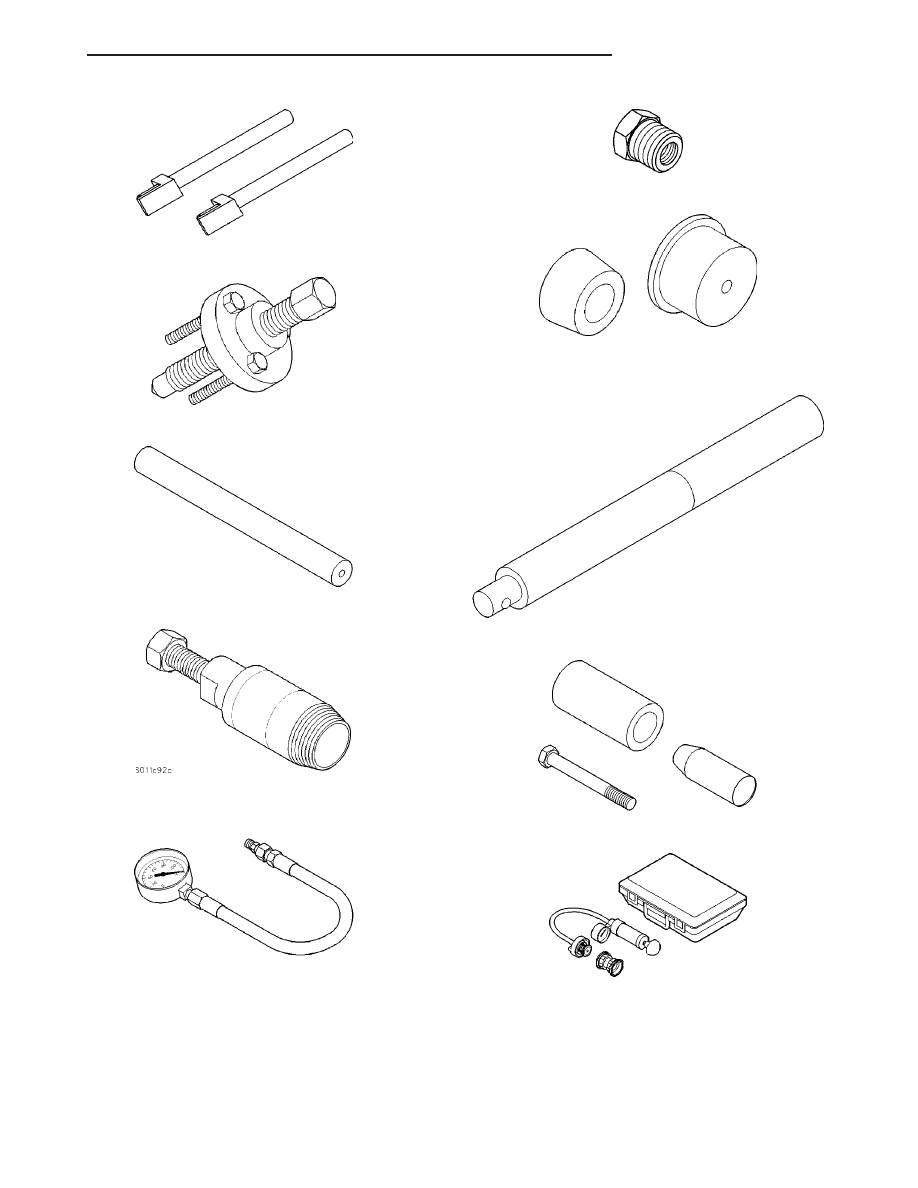Chrysler Sebring, Stratus sedan, Sebring Convertible. Manual - part 480

Connecting Rod Guides 8189
Crankshaft Sprocket Remover 6793
Crankshaft Sprocket Remover Insert C-4685-C2
Crankshaft Seal Remover 6771
Oil Pressure Gage C-3292
Adaptor 8406
Rear Crankshaft Seal Guide and Installer 6926-1 and
6926-2
Driver Handle C-4171
Front Crankshaft Oil Seal Installer 6780
Cooling System Tester 7700
JR
ENGINE 2.0L DOHC
9 - 23
ENGINE 2.0L DOHC (Continued)